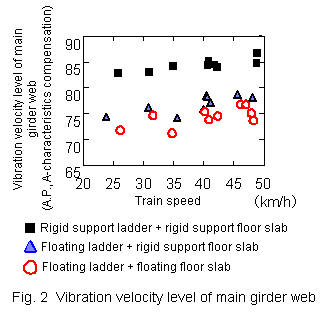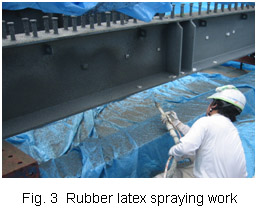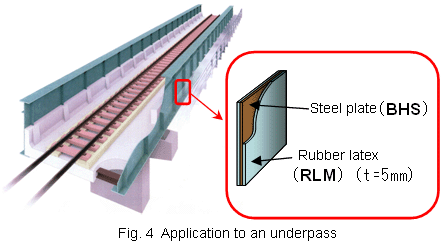To reduce noise from structures, the RTRI proposed a new steel bridge adopting a floating structure for tracks and RC floor slabs, and installed a life-size test steel girder upon it (Fig. 1). In a train running test at 40 km/h, the vibration velocity level of the main girder web decreased by about 7.5 dB with a floating ladder track, and by about 2.6 dB with floating-structure RC floor slabs, compared to the value for the conventional solid bed track structure (Fig. 2).
The RTRI also proposed a method to spray rubber latex mortar (RLM), a mixture of rubber and cement mortar, on both surfaces of bridge steel plates to a thickness of 5 mm (Fig. 3). The results confirmed a damping effect of about 7.8 dB (A-characteristic compensated vibration velocity when excited using an impulse hammer) on the main girder, which is equal to the effect of conventional magnetic compound damping material.
When compared with magnetic compound damping material, RLM has sufficient levels of peeling and weather resistance to cut installation costs by about 50% through elimination of the painting and damping material installation costs incurred previously. The simplicity of the execution work involved makes the technique suitable for damping vibration in existing steel bridges.
When a high-performance steel material for bridges (BHS) featuring high levels of strength and ductility is used in combination with this technique, the weight of the steel material can be cut by about 5%, thus reducing construction costs (Fig. 4)
|





